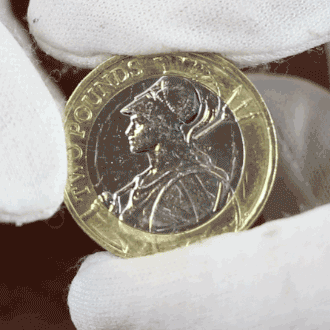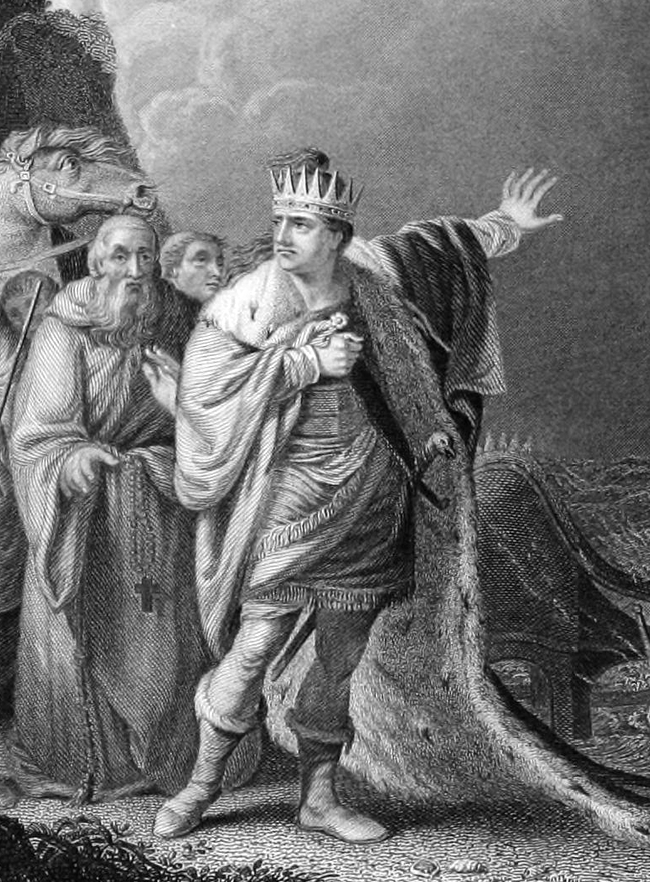Posts Tagged ‘Royal Mint’
Just Discovered: Rare “Inverted Effigy” £2 Coin
It’s time to really start examining your change again.
Change Checker has just been able to confirm that a small number of “Inverted Effigy” £2 Coins have entered circulation.
First discovered by a Change Checker, and now confirmed as genuine by The Royal Mint, this unusual strike appears on a handful of the 2015 Britannia £2 Coins.
The Royal Mint has accounted for the seemingly impossible misalignment of the Queen’s effigy as “almost certainly the result of one of the dies working loose and rotating during the striking process”.
The result is that the Queen’s head is offset by around 150 degrees compared to the Britannia design on the reverse of the coin.
Just how rare is the Inverted Effigy £2 Britannia?
The Royal Mint is unable to give any indication of how many Inverted Effigy coins have entered circulation but we can make some initial estimates.
 The first-year 2015 £2 Britannia is already one of the most-scarce circulating £2 coins ever issued with just 650,000 coins passing through banks and cash centres. That already places it third equal in the all-time low mintage charts.
The first-year 2015 £2 Britannia is already one of the most-scarce circulating £2 coins ever issued with just 650,000 coins passing through banks and cash centres. That already places it third equal in the all-time low mintage charts.
We have analysed 5,000 circulation coins and our results suggest that the Inverted Effigy may have affected as few as 1 in 200 of the coins struck – in other words around just 3,250 coins.
Of course, if the Inverted Effigy is a consequence of the die slipping during the striking process, it is possible that there may be other variations where the Queen’s head is less or more misaligned as the die has worked its way out of position.
Errors, mis-strikes and myths
Of course, given the many million coins The Royal Mint strike each year, it is to their immense credit that mis-strikes and errors are so few and far between. But, of course, when they do arise, they cause great collector excitement, as some of these other examples pay testament to.
- The Undated 20p – read more
- The “Silver” 2p – read more
- The 2014 Year of the Horse Silver £2 – read more
But there are a few myths out there too – upside down edge lettering, the “Pemember” Gunpowder Plot £2 coin and the “Necklace” £2 coin, which all have perfectly normal explanations.
Buyers beware
But finally a note of caution. I’m sure in time we’ll see some “examples” of the Inverted Effigy £2 for sale online. Before you think of buying one, please beware. Are you seeing a genuine Inverted Effigy or just a coin that someone has rotated in a photograph to make it look inverted?
Who was King Canute and why is he on the new UK £5?
Today marks 1,000 years since the coronation of King Canute and to mark the anniversary, The Royal Mint have issued a brand new UK £5 coin. But who was King Canute?

The Royal Mint have issued this brand new UK £5 coin to celebrate the 1,000th anniversary of the coronation of King Canute
Hailed the ‘king of all England’
50 years before the Norman Invasion of 1066, Canute crossed the North Sea and won the throne of England.
Recognised as one of the most prominent kings of the Anglo-Saxon era, Canute is widely remembered for conquering kingdoms across northern Europe including England, Denmark, Norway, and areas of Sweden.
Born in Denmark, King Canute’s exact birth year is unknown, although it is thought to be between 985–995 AD. Canute grew up at a time when the crown of England was being ferociously fought over by the Anglo-Saxons and the Vikings.
Canute became the undisputed successor to the English throne in 1016 after months of warfare between Canute and Edmund Ironside (son of Æthelred ‘The Unready’) and his coronation took place on the 6th January 1017 at the Old St Paul’s cathedral.
Canute or Cnut the Great?
Canute was originally known as Knútr (which means ‘Knot’) in Old Norse and in Denmark he is still known as Knud den Store (‘Cnut the Great’).
Anglo-Saxons rarely used the letter K and the letter combination ‘CN’ was quite normal in Old English, so his name was spelt CNUT in the Anglo-Saxon Chronicle and, importantly, on coins issued in his name in England and Denmark.
Later medieval writers turned this into ‘Canutus’ which became the spelling ‘Canute’, often seen in modern English as a more familiar modern day spelling.
A historical coin
King Canute’s achievements and influence paved the way for the nation we recognise today. He strengthened the currency, initiating a series of coins of equal weight to those being used in Denmark, so it’s only fitting that the design of this brand new £5 coin has been inspired by the original currency of King Canute.
This is the first time ever The Royal Mint has commemorated a 1,000-year anniversary on a coin – an occasion of real significance.
Own Britain’s new £5 coin – the first release of 2017
Today you can own the brand new 2017 UK £5 coin issued to mark the 1,000th anniversary of the coronation of King Canute – an anniversary never before celebrated on a UK coin.
First look: New Royal Mint UK coin designs for 2017

Every year The Royal Mint mark the year’s memorable events and anniversaries that capture the nation’s striking stories on circulating coins, and 2017 is no different.
Today The Royal Mint have unveiled the new themes and designs for all the 2017 commemorative coins, and Change Checkers can look forward to some very significant British anniversaries being commemorated.
£5 – King Canute

2017 marks the 1000th anniversary of the coronation of King Canute and this £5 coin designed by Lee R. Jones has been issued.
This brand new £5 coin depicts King Canute, the Viking conqueror hailed the first ‘king of all England’.
£5 – House of Windsor Centenary

To mark the 100th anniversary of the creation of the House of Windsor this £5 coin has been designed by John Bergdahl.
A centenary of royal service is commemorated on this £5 coin marking the 100th anniversary of the creation of the House of Windsor – when King George V changed the name of the British Royal Family from the German Saxe-Coburg and Gotha to the English Windsor.
£2 – Jane Austen

Designed by Dominique Evans, a portrait of Jane Austen features on this brand new £2 coin to mark 200 years since her death.
To mark the 200th anniversary of the death of Jane Austen, one of the best-loved English novelists, this £2 coin featuring her portrait has been issued.
£2 – WW1 Aviation

This £2 coin has been designed by the agency ‘tangerine’ and pays tribute to the aviators of the First World War.
In commemoration of the Centenary of the First World War, The Royal Mint has issued a series of specially commissioned £2 coins. This coin pays tribute to the aviators of the First World War and their sacrifices in the race for supremacy of the skies.
50p – Sir Isaac Newton

This 50p coin has been issued to commemorate the achievements of Sir Isaac Newton and has been designed by Aaron West.
This 50p coin remembers the legacy of Sir Isaac Newton, genius of the Scientific Revolution and one of the most famous men in history.
The announcement of next year’s coins is always an exciting moment for Change Checkers, particularly when the anniversaries are as significant as these.
And now we can now start looking forward to finding these new designs in our change throughout the year!
 The 2017 Change Checker Commemorative Coin Set
The 2017 Change Checker Commemorative Coin Set
If you can’t wait to find these coins in your change you can add the 2017 Change Checker Commemorative Coin Set to your collection today>>




